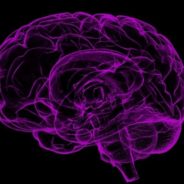Snapshots of Dementia: And Now, the Moment We’ve All Been Waiting For
Photo by Jack Sharp on Unsplash It took us forever to reach this point in mid-September of 2019. In fact, it took not only the visits over three years to neurologists Nos. 1, 2 and 3, but also a 50-plus page questionnaire/application, prayer and what the brain clinic in South Florida said would be a long wait. But only a few days after I submitted the paperwork via certified mail, the clinic called with a sudden cancellation. Could we come in just a few days? You know my answer. As I drove the three-plus hours from Orlando, I prayed this would be that long-awaited moment: The diagnosis that said yes, Tom has dementia. The diagnosis that said yes, it’s FTD (frontotemporal degeneration). The diagnosis that would move him closer to qualifying for disability payments. I decided to travel the distance to neurologist No. 4 because we had reached a stalemate. After two tries, our insurance wouldn’t approve the PET scan neurologist No. 3 said she needed to differentiate between FTD and early-onset Alzheimer’s disease. Already struggling to cover our bills without Tom’s income, I wasn’t about to pay the estimated $5,000 cash for the scan. So I decided to visit one more neurologist—this time, one recommended by the Association for Frontotemporal Degeneration. I hadn’t known to check their list earlier because, until neurologist No. 3, I hadn’t known about FTD. After a slight GPS-induced detour, we arrived for our longest neurology visit to date. I found the team: — Thorough: The group, which included a dietician, physical therapist, nurse practitioner and social worker, met with Tom and me individually and collectively. The exam included neuropsychological testing as well. — Knowledgeable: I knew more about FTD now than I ever had, but this team knew more. That might seem obvious, but it had not proven true with doctors prior to neurologist No. 3. —Caring: This was the first appointment where anyone expressed concern for my mental and emotional health. Just having someone express empathy for our journey meant a lot. The team members were more empathetic than the doctor, who seemed distant, even rude, but I happily accepted knowledge over hand-patting, especially when receiving the latter from anyone came as a surprise. After all the exams and discussions, the entire team met with both of us to give us what they’d promised at the start of our appointment: A diagnosis. In brief, here’s what they said: 1. Tom definitely has dementia. He shows marked impairment in several tested areas, in memory but also in logical sequencing and other elements associated with executive function. His 2019 MRI also shows marked shrinkage from the 2017 one, particularly in the frontal area of his brain, another clear dementia indicator. 2. Tom has a balance problem and needs physical therapy. (I’d spoken with previous neurologists about this and been largely ignored.) 3. My “story,” as the neurologist put it, indicates FTD, behavioral variant, which Tom may have. But the overall testing shows he may have either FTD or early-onset Alzheimer’s. This doctor said Alzheimer’s disease is “a quicker path to disability” (which, I later learned, is not necessarily true) so he would diagnose early-onset Alzheimer’s. Once Tom received approval for disability, he or another neurologist could order the PET scan under Medicare. We now...
read moreSnapshots of Dementia: It’s the Little Things
Photo by Danielle Rice on Unsplash Over the past several months of my somewhat irregular “snapshots of dementia” posts, I’ve written about lots of big things. Our painful journey toward diagnosis. Job losses. Wounds to our marriage and our family. Asking Tom to stop driving. And more. But I’ve also noticed that with dementia as with many areas of life, the little things often have just as much impact as the large ones. Consider the following as not a list of my favorite things but rather of the little things that touch my heart as I watch his early-onset dementia, frontotemporal degeneration, steal so much from my husband. — Open Doors: Tom’s short-term memory has become so short that he rarely remembers to close doors or drawers. You may recall that much earlier, we had to put special hinges on our front door to close it automatically because more than once, he left it standing open when he left for work. Now I can trace his path through our home by the doors and drawers he leaves open. Praise God for a refrigerator with an alarm! — Press Pause: Sometimes I find Tom standing in our hallway, a blank look on his face. Although it passes quickly, I know this means he’s started to go somewhere or do something and forgotten what he started out to do. I can hear some of you saying, “But I do that all the time.” Yes, but probably not fifteen or more times a day—and within only a few seconds of starting the activity. — Delayed Departure: My experience as the mother of five has prepared me well for my current stage of life. As a mom, I had to plan to leave 10 or 15 minutes earlier than the actual departure time because someone wouldn’t have their shoes on or another would need to make a bathroom stop. Even if I tell Tom, “We have to leave in a few minutes,” his broken brain can’t translate that to the steps he must take to be ready to go. In fact, if I give him only two things to do, he will usually forget one of them. These days, we exit more slowly and often have to make a trip or two back inside before our true departure. — “You’re So Smart”: Tom often makes this comment multiple times a day. “You’re so smart” because I could log onto the library website. “You’re so smart” because I knew how to install an app on my phone. “You’re so smart” because I remembered what I had planned for the weekend. What touches my heart here? He never used to say, “You’re so smart” because these were all things he could do for himself. — As a Child: So many things Tom does have become more childlike; in fact, he sometimes talks in a childlike tone. He still enjoys TV and movies, but some of the shows he loves best are the ones he watched as a child. He plays Candyland and other board games with our teenage foster grandson, often losing without realizing why. But simple things seem to thrill him just as they do a child. He often tells me it’s his “best day ever” because we got him two of his favorite...
read moreSnapshots of Dementia: Desperately Seeking Diagnosis
Photo by Raman Oza from Pixabay In a previous episode of “As the Journey Toward Diagnosis Turns,” Tom’s most recent neurologist (No. 3, in case you’re counting) had requested two things to help her solidify Tom’s diagnosis: a PET scan of his brain and the records from the neuropsychologist. Insurance denied the PET scan, but the doctor wanted us to come in anyway. I fought the early-morning Orlando traffic only to discover that the neuropsychologist hadn’t accepted this most recent neurologist’s form, so he hadn’t sent the records. Instead, we had to fill out an additional request. As soon as we completed and signed it, our neurologist’s office faxed it back, believing Tom’s records would arrive soon. We waited. And waited. And ended up having to reschedule because the records still hadn’t arrived. In fact, the neuropsychologist’s office had stopped answering the phone when our neurologist’s office called. Throughout this season of my life, I have had some amazing and supportive medical personnel who have assisted us. But I have also experienced the frustration of dealing with a system that somehow works against rather than for the patient. Why should our health records not be our health records? Why should we have such a difficult time obtaining them to share with another health professional? Fast forward to a few weeks later, another denial of the PET scan by our insurance and another visit to the neurologist. This time, she had the results of the neuropsychological exam. I wasn’t convinced they would help her much, since that practitioner had told us Tom’s only issues were ADHD and shame associated with some of his poor choices. But of course, we were glad to have another appointment. This time, they did another preliminary memory test, and Tom again charmed the nurse’s assistant. I couldn’t tell if he remembered our previous visit or not, but after a brief physical exam and a few more questions, the neurologist explained her dilemma. After reviewing his records, she felt even more confident that he had frontotemporal degeneration, behavioral variant (and by now, I’d done enough reading to agree with her). But she hesitated to make a firm diagnosis without “proof” via a PET scan (I’ve since learned from other FTD spouses as well as medical reports that PET scans do not always provide such proof.) Since our insurance wouldn’t pay for it, we could either wait until Tom turned 65 and get it via Medicare (at that time, nearly two years away), pay for it ourselves (at approximately $5,000) or remain undiagnosed. It may not surprise you that, with my newfound advocacy for my husband, I chose the fourth door: Another neurologist. By this time, I had become connected with the Association for Frontotemporal Degeneration, so I looked at the AFTD website and found just two brain clinics in Florida that they recommended. The first wouldn’t take Tom as a patient. The second would, and although it was more than three hours away and I would have to pay out of pocket, I knew a diagnosis would make it well worth the trip. Besides, if this neurologist was an expert in FTD, surely we would have an answer one way or another. Of course I didn’t expect such an answer at the first visit, but I...
read moreSnapshots of Dementia: Sometimes, We Cry
Unsplash/K. Mitch Hodge I heard Tom before I saw him. As he came through the front door, he sobbed. Working to sort, discard and pack our belongings in advance of putting our Florida home on the market, I’d had a few moments to myself while Tom went with one of our daughters to the county dump. He had driven one car and she, another. (Only a few weeks later, we had to take away his keys.) “Baby! What’s the matter?” I called out as I hurried to meet him. His shoulder shook and the tears poured down his face. “I just hate it when I get things mixed up,” he said. “I bet [our daughter] is so mad at me.” He’d forgotten where the dump was, a lapse that cost them extra time. And no, our daughter wasn’t upset, but it took him several moments to calm down. If you asked Tom about his illness today, he would say he has early-onset dementia, although he might not be able to tell you its name. But back then, we still had no diagnosis, and most of the time, he exhibited the typical FTD anosognosia or lack of awareness of his cognitive lapses and their effects. As our life continued to spiral in scary directions, this proved at best frustrating and at worst maddening. That day, I realized something: I prefer it when he remains unaware. If he doesn’t know he’s forgotten, doesn’t realize he’s caused some sort of problem, doesn’t understand it’s not the website’s fault or the phone’s fault or the television’s fault but his own, he doesn’t understand his decline. And he doesn’t cry. That wasn’t the first day Tom cried, but it was the last for a while. He didn’t cry when, that same week, he made an inappropriate (not sexual) comment to a female friend. He didn’t cry when I put the house on the market. He didn’t cry when, night after night, I would come home from a long day at work, cook dinner, pack or do freelance work while he played on his phone, watched television or slept. He didn’t cry when our children traveled hundreds, even thousands of miles to help us move—or when they left (two for what we thought at the time would be years overseas). The disease has affected the part of his brain that controls emotional reactions, and the damage is uneven. Sometimes his responses are exaggerated, and at other times, blunted. With his and other dementias, what you see happening is not always what you get by way of response. Sometimes, he still cries. We have recently begun attending in-person worship despite his vulnerability to COVID-19 because our church opened up a masks-required section. But every week, he’s cried on the way to church and through part of the service. Although he can’t often articulate his thoughts, I believe he grieves what should still be and, because of his dementia, is not. A job as a pastor. A leadership role. The opportunity to make a real difference in others’ lives. The moments of clarity are often the moments that bring tears. One evening this summer, he seemed especially aware, and I tried to ask how he was feeling about all the changes in our lives. Most of his...
read moreSnapshots of Dementia: More Puzzle Pieces
Photo by Fabiran Kühne on Unsplash Clearly life has gotten in the way of blog posts, and that will happen sometimes. But as I return to the blog, I want to dive back into our journey toward diagnosis (I’m really not trying to make it take as long as the actual journey!). You can find the most recent segment related to diagnosis at this link. In that previous post, I discussed a visit with the third neurologist we saw in our effort to discover what was going on with Tom’s health/memory/behavior and other problems. By this time, I had made some big decisions, most especially the ones that involved selling our home and moving to be closer to family in the upstate of South Carolina (here, we’re closer to our two oldest daughters, one a few minutes away from us and one in Atlanta, only two hours away). I knew that no matter what the doctors said, something was definitely wrong with Tom. I knew he had lost three jobs in quick succession and that we could no longer allow him to drive. And I knew I couldn’t count on him to lead and provide for our family in the way he had for so long. But I still needed help to get a diagnosis. I hoped it would be a path toward disability benefits if, as we thought, he could no longer hold down a job. And I especially needed a diagnosis because I hoped doctors could stop or slow down the disease. This third neurologist was the first one to mention FTD, or frontotemporal degeneration. I’m a writer and editor by profession and also by identity. That means I’m the type of person who will research and read everything I can on any given topic. I’ve already told you more in these posts about FTD than I knew at that point, now about a year and a half ago. But here are some of the key characteristics that stood out to me in my very early research on the topic: —FTD typically strikes younger people (the age range for onset is 21-80, but the majority of cases occur between 45 and 64.) Tom had just turned 63, and I’d suspected problems since well before he turned 60. —FTD is frequently misdiagnosed. Enough said. —FTD is less common and less known than Alzheimer’s. —FTD has no known treatment or cure. This site says, “no current treatments stop or slow the progression of the disease.” And that’s one of the reasons I want to keep writing. As we raise awareness, we can also advocate for research (it’s happening, but slowly) and work toward a brighter future for others faced with this deadly diagnosis. I also learned that FTD has some subtypes including corticobasal syndrome, which affects movement; primary progressive aphasia (PPA), which results in the gradual loss of the ability to speak, read, write and understand speech; and the behavioral variant, which is the type we believe Tom has. There can also be a genetic connection between FTD and amyotrophic lateral sclerois (ALS). Each type is distinct, but as the disease progresses, the symptoms tend to merge. And yes, I do see this merging happening with Tom. Reading about the behavioral variant type was shocking and, in a strange...
read more








